#tachyglossus aculeatus
Explore tagged Tumblr posts
Text

A short beaked echidna (Tachyglossus aculeatus) in Freycinet, Australia
by Charles Sharp
#short beaked echidna#echidnas#monotremes#tachyglossus aculeatus#tachyglossus#tachyglossidae#monotremata#mammalia#chordata#wildlife: australia#wildlife: oceania
194 notes
·
View notes
Text

すごい久しぶりに行ったけど、ハリモグラ展示が継続されていて嬉しい。
沼津港深海水族館
This aquarium exhibits echidnas in the coelacanth zone, because they are coelacanths among mammals. Good sense.
Numazu Deepblue Aquarium
32 notes
·
View notes
Text

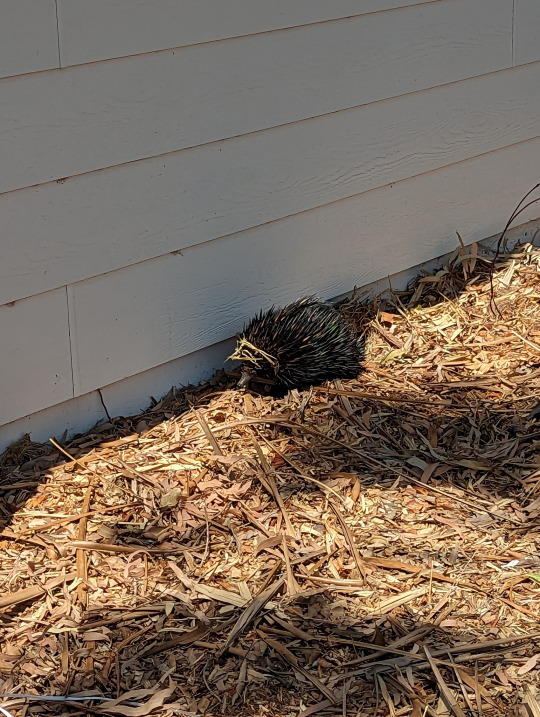
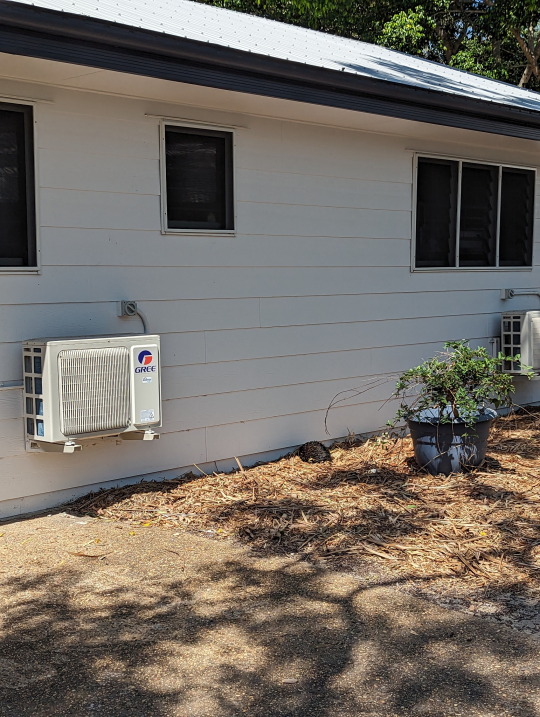

Fat Echidna found on Woppa (they do inhabit the island as well as the mainland).
Sadly, while driving to Yeppoon, we saw a lot of dead echidnas on the road... The highway is frequently covered in native animal roadkill. At least on Woppa, there's little chance of an echidna being runover.
BTW, despite looking like hedgehogs, they're very much unrelated. Echidnas are their own thing (closely related to the platypus).
11/09/23 - Mammalia: Tachyglossus aculeatus - Woppa, cabin area
#Tachyglossus aculeatus#Echidna#Monotremata#Monotremes#Mammalia#Mammals#Prototheria#Prototherians#Vertebrata#Vertebrates#Chordata#Chordates
130 notes
·
View notes
Text





#monotreme#platypus#platypuses#echidna#poll#random poll#fun polls#poll time#my polls#tumblr polls#random polls#polls#tumblr poll#fandom polls#polls on tumblr#polls polls polls#polls are fun#Platypus#Ornithorhynchus anatinus#Short-Beaked Echidna#Tachyglossus aculeatus#Western Long-Beaked Echidna#Zaglossus bruijnii#Eastern Long-Beaked Echidna#Zaglossus bartoni#Attenborough's Long-Beaked Echidna#Zaglossus attenboroughi#animals#animal#cute animals
28 notes
·
View notes
Text

Short-beaked echidna Tachyglossus aculeatus
Range includes most of Australia, Tasmania, and other offshore islands.
Image source: JKMelville
#mammalia#monotremata#tachyglossidae#tachyglossus#tachyglossus aculeatus#mammals#echidnas#animals#photos#oceania#tasmania#australia
8 notes
·
View notes
Text



Short-beaked Echidna (Tachyglossus aculeatus), family Tachyglossidae, Canberra, Australia
Also called "spiny anteaters".
Echidnas are monotremes, mammals that lay eggs (along with platypuses).
Females lay eggs and keep them in a pouch.
The hatchlings are called "puggles".
photographs by Richard Wood
771 notes
·
View notes
Text
Round 3 - Mammalia - Monotremata




(Sources - 1, 2, 3, 4)
Our first and most ancient living order of mammals is Monotremata. There are five living species of monotreme: one Platypus (image 1) and four echidnas. These are the Short-beaked Echidna (Tachyglossus aculeatus) (gif below), Attenborough’s Long-beaked Echidna (Zaglossus attenboroughi) (image 4), the Western Long-beaked Echidna (Zaglossus bruijnii) (image 2), and the Eastern Long Beaked Echidna (Zaglossus bartoni) (image 3).
Monotremes have structural differences in their brains, jaws, digestive tract, reproductive tract, and other body parts, compared to many other mammals, though they are most often differentiated by the fact that they are the last remaining order of mammals to lay eggs. All living species lack teeth as adults, though platypuses have them as babies. All living species have spurs on their hind limbs, though they are vestigial in echidnas. In male platypuses they are attached to venom glands and contain venom powerful enough to kill predators as large as a dog. Monotremes have 400-40,000 electroreceptors on their snouts, depending on species, which they use to locate invertebrate prey buried beneath sediment. All living species of monotremes are indigenous to Australia and New Guinea, though Cretaceous species were also found in South America.
Monotremes possess five pairs of sex chromosomes and one of the X chromosomes resembles the Z chromosome of birds, suggesting that the two sex chromosomes of other mammals evolved after the split from the monotreme lineage. Like reptiles, monotremes have a cloaca, which is a single opening for both reproduction and waste removal. However, urine is excreted through the cloaca while semen passes through the male monotreme’s penis. The monotreme penis is similar to that of turtles and is covered by a preputial sac. Monotreme eggs are soft-shelled and leathery. They are retained for some time within the mother and receive nutrients directly from her, generally hatching within ten days after being laid. Newly hatched monotremes are called “puggles,” and are fetus-like, with relatively well-developed forelimbs that enable them to crawl around. Female monotremes do have mammary glands and nurse their young with milk, though they lack teats. Instead, mother monotremes lactate via pores in their skin, “sweating” out the milk. All five living species show prolonged parental care of their young, with low rates of reproduction and relatively long life-spans.
Monotremes arose in the Early Cretaceous. Some of the oldest known platypus-like fossils are Steropodon and Dharragarra of the Late Cretaceous. Our living platypus is also known from Pliocene fossils.
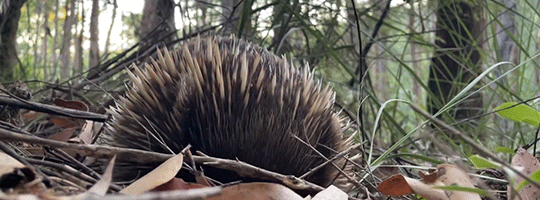
Propaganda under the cut:
Monotremes maintain a lower average temperature than most mammals, conserving energy by "switching off" their temperature regulation and going dormant in cold weather.
The tongues of long-beaked echidnas (genus Zaglossus) have sharp, tiny spines that help them capture their termite, ant, and worm prey. Since they have no teeth, they break down their food by grinding it between the bottoms of their mouths and their tongues.
Monotreme milk contains a highly expressed antibacterial protein not found in other mammals.
Monotremes are the only mammals (apart from the Guiana Dolphin [Sotalia guianensis]) known to have a sense of electroreception, and the Platypus's electroreception is the most sensitive of any monotreme.
In the American animated series Phineas and Ferb, the title characters own a pet bluish-green Platypus named Perry who, unknown to them, is a secret agent. Coincidentally, and unbeknownst to show creator Dan Povenmire at the time, real platypuses biofluoresce a similar cyan colour when seen under ultraviolet lighting!
The longest recorded lifespan for an echidna in human care was 50 years, with anecdotal accounts of wild individuals reaching 45 years.
Venom production rises among male Platypuses during the breeding season, and it may be used to assert dominance.
I’m really sorry about more penis talk but we’re all adults here I hope. So… male echidnas have a four-headed penis, covered in penile spines. During mating, the heads on one side "shut down" and do not grow in size; the other two are used to release semen into the female's two-branched reproductive tract. Each time it copulates, it alternates heads in sets of two. When not in use, the penis is retracted inside a preputial sac in the cloaca. During mating season, a female may be followed by a line or "train" of up to ten males, the youngest trailing last, with some males switching between lines.
In 1799, the first scientists to examine a preserved Platypus body deemed it a hoax made of several animals sewn together.
Echidnas are very timid. When frightened, they attempt to partially bury themselves and curl into a ball similar to a hedgehog. Strong front arms allow echidnas to dig in and hold fast against a predator pulling them from the hole.
The rarest species of monotreme is the critically endangered Attenborough's Long-beaked Echidna (Zaglossus attenboroughi). It had only been seen once in 1961 in the Cyclops Mountains of the Indonesian province of Papua. It was thought to be extinct until some of its "nose pokes" (holes from the echidna’s nose poked into the ground as it searches for earthworms) were found in the mountains during an expedition in 2007. Finally, in November 2023, the first video footage of a living individual was recorded (image 4).
The Platypus holds special meaning as a totem animal for the Watiwati people, who live along the Murray River.
#SORRY I FORGOT TO EDIT THE POLL TO SAY MONOTREMATA INSTEAD OF X AND I CAN’T CHANGE IT NOW 😭#idk how I missed that ;_;#Mammalia#animal polls#Round 3
135 notes
·
View notes
Text
Carcinization this, carcinization that, what about anteaterization

Southern tamandua (Tamandua tetradactyla, eastern South America): an actual anteater
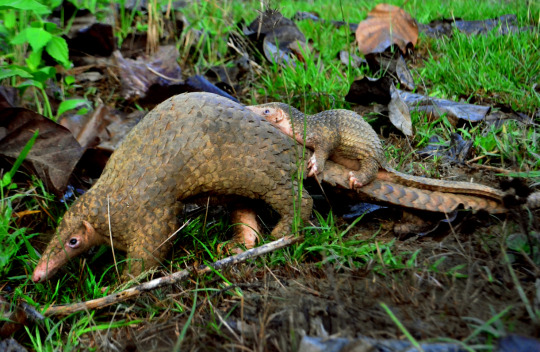
Philippine pangolin (Manis culionensis, Philippines), a loose relative of Carnivorans
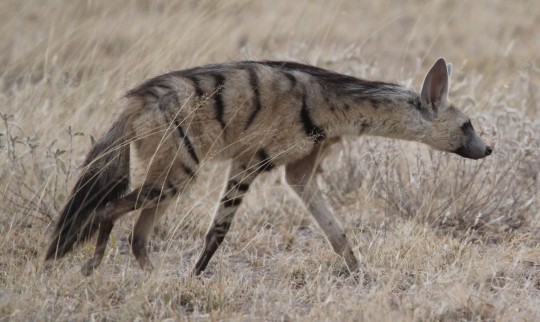
Aardwolf (Proteles cristata, south and east Africa): a hyena
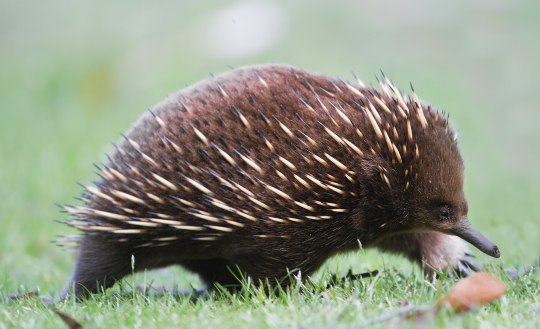
Short-beaked echidna (Tachyglossus aculeatus, Australia): an egg-laying Monotreme, close to the platypus
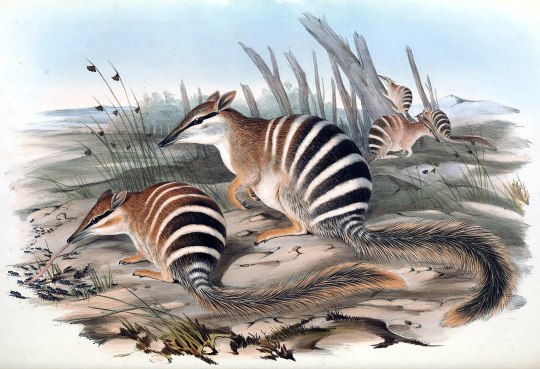
Numbat (Myrmecobis fasciatus, also Australia): a Marsupial

Sun bear (Helarctos malayanus, Southeast Asia): a frickin' bear
812 notes
·
View notes
Text
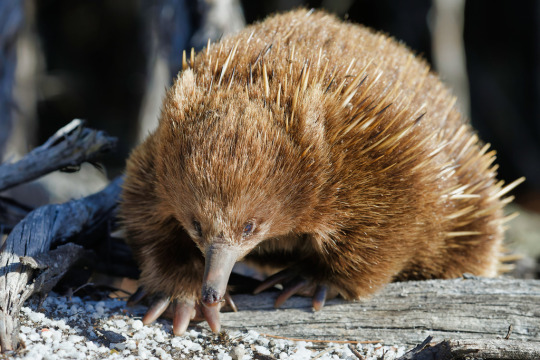
Did you know? The short-beaked echidna (Tachyglossus aculeatus) is a monotreme, meaning it’s one of the few mammals that lays eggs instead of bearing live young. This species lives for an average of 10 years in the wild, and up to 50 years in captivity. Weighing up to 15.4 lbs (7 kg), this spiky critter can be found in parts of Australia, New Guinea, and Tasmania. It feeds on invertebrates like ants and termites.
Photo: crapgame, CC BY-NC 4.0, iNautralist
#science#nature#echidna#monotremes#animal facts#animal kingdom#cool animals#fun animal facts#fact of the day#dyk#mammal
466 notes
·
View notes
Note
Trick or treat!! 🧡
You got a short-beaked echidna (Tachyglossus aculeatus)!

63 notes
·
View notes
Text


This animal was requested!
#animal polls#my polls#austrialian wildlife#wildlife#echidna#short beaked echidna#mammalia#mammals#monotremata#monotreme#new guinea#australia
64 notes
·
View notes
Text

Walia ibex Capra walie
I love ibexes and this one is so dramatically coloured. Love their little stripey socks.
They are endemic to an itty bitty part of Ethiopia.
Digital zoo - in analog space, there is no captive population of these guys whatsoever.
You can look them up or go by vibes :D If you suggest something else and it doesn’t win, I’ll add it to my list for the future!
5 notes
·
View notes
Photo
Tasmanian Short-beaked Echidna (Tachyglossus aculeatus setosus)
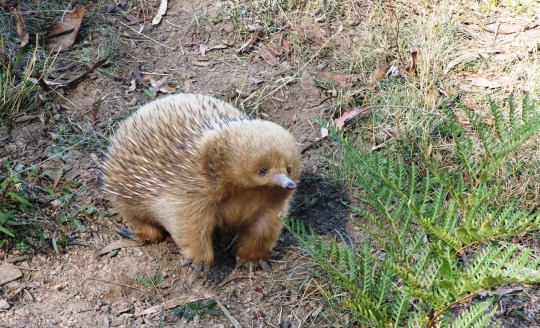
293K notes
·
View notes
Text
Uncharismatic Fact of the Day
Blowing bubbles is a great summer pastime, especially for echidnas! Too keep themselves cool, short-beaked echidnas blow snot bubbles, and the mucus wets their snouts. When it the mucus evaporates the moisture draws out heat-- an efficient cooling method known as evaporative cooling.

(Image: A short-beaked echidna (Tachyglossus aculeatus) by Jamie Lamb)
374 notes
·
View notes
Photo

The spines of a short-beaked echidna (Tachyglossus aculeatus)
by Mitch Thorburn
#short beaked echidna#echidna#monotremes#tachyglossus aculeatus#tachyglossus#tachyglossidae#monotremata#mammalia#chordata#wildlife: australia#wildlife: queensland
16 notes
·
View notes
Photo

Kangaroo Island echidna (Tachyglossus aculeatus multiaculeatus)
Photo by Julien NKS
#kangaroo island echidna#short beaked echidna#echidna#tachyglossus aculeatus multiaculeatus#tachyglossus aculeatus#tachyglossus#tachyglossidae#tachyglossa#monotremata#mammalia#tetrapoda#vertebrata#chordata
473 notes
·
View notes